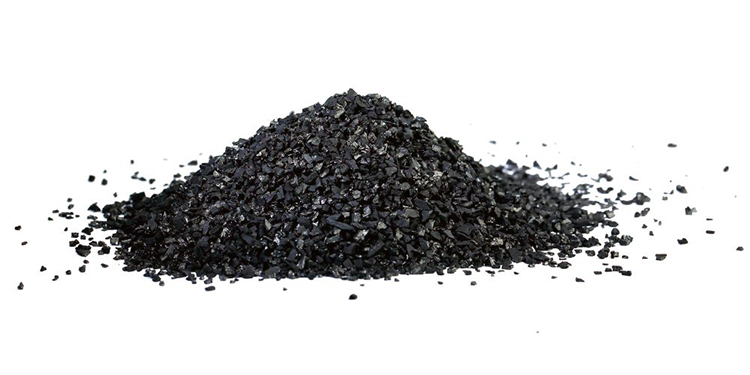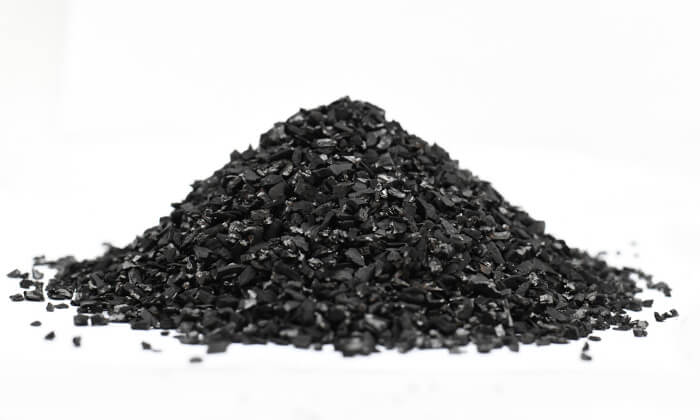Activated carbon, known for its excellent adsorption properties, is widely used in various fields such as water treatment, air purification, and metal refining. Its performance is highly dependent on the choice of raw materials, and anthracite, as an ideal raw material for producing high-performance activated carbon, offers significant advantages due to its unique physical and chemical properties. Many activated carbon manufacturers, such as Hebei Huahuang Activated Carbon Co., Ltd., utilize anthracite to produce high-performance activated carbon, contributing to technological advancements and environmental solutions across various industries.

Anthracite, with its high carbon content, low ash content, and minimal volatile matter, is an ideal choice for producing high-performance activated carbon. Activated carbon made from anthracite has the following notable advantages:
High Adsorption Performance: The high carbon content and unique pore structure of anthracite make the activated carbon produced from it have a high specific surface area and strong adsorption capacity, making it highly effective at removing harmful substances, heavy metals, and pollutants from water and gases.
Good Physical and Chemical Stability: Anthracite-based activated carbon exhibits strong chemical stability, allowing it to maintain long-term performance under extreme conditions, such as high temperatures or strong acidic and alkaline environments, making it suitable for various industrial applications.
Outstanding Environmental Performance: Anthracite-based activated carbon plays a crucial role in wastewater treatment and gas purification, effectively reducing environmental pollution and protecting ecosystems, which meets modern environmental standards.
Due to its excellent performance, anthracite-based activated carbon is widely used in the following fields:
Water Treatment: Activated carbon is highly effective at removing organic substances, heavy metal ions, and odors from water, making it indispensable in both industrial wastewater treatment and drinking water purification.
Gas Treatment: Activated carbon is widely used in air purification to remove harmful gases, such as ammonia and hydrogen sulfide, and plays an important role in the treatment of exhaust gases in chemical and petrochemical industries.
Metal Refining: During the refining of precious metals such as gold and silver, activated carbon adsorbs metal ions in solutions, improving refining efficiency and metal recovery rates.
Textile Dyeing: Activated carbon is used to remove dyes and pollutants from wastewater, reducing water pollution and improving environmental quality. It is an essential material for the textile and dyeing industry.
Food and Pharmaceutical Industries: In food processing, activated carbon is used for decolorization and impurity removal, while in the pharmaceutical industry, it is commonly used for purifying raw materials and removing impurities to ensure the safety and quality of pharmaceutical products.

The production process of anthracite-based activated carbon involves several steps, and precise control at each stage directly affects the final product's performance:
Pre-treatment: First, anthracite is screened and cleaned to remove impurities and adjust the particle size of the raw material.
Carbonization: The anthracite is subjected to high-temperature pyrolysis, removing volatile substances and increasing the carbon content.
Activation: The carbonized anthracite undergoes activation using high-temperature steam or carbon dioxide gas, which reacts with the carbon to create numerous pores, enhancing its adsorption performance.
Post-treatment: The activated carbon is washed and dried to meet the required standards, resulting in high-performance activated carbon.
With the increasing stringency of environmental standards and ongoing technological advancements, the application of anthracite-based activated carbon in various fields will continue to expand, especially in green energy, wastewater treatment, and air purification. In the future, the activated carbon industry will face a broader development prospect.
Through technological innovation and process optimization, the adsorption performance, service life, and production efficiency of activated carbon will continue to improve, playing an important role in promoting sustainable development in the environmental protection industry.
Anthracite-based activated carbon, with its excellent physical and chemical properties and wide range of applications, has become an indispensable material in various industries. With ongoing technological advancements and increasing environmental demands, the global application prospects for activated carbon are becoming even more expansive. In the future, the activated carbon industry will continue to innovate to meet more stringent environmental requirements and market demands.
None of our operators are available at the moment. Please, try again later.